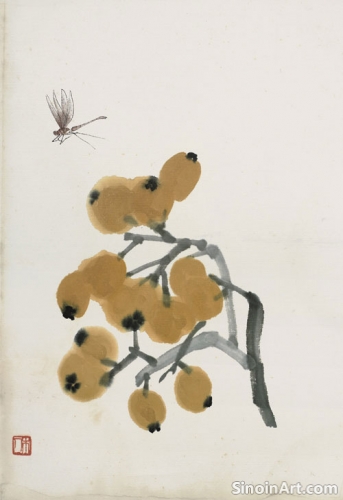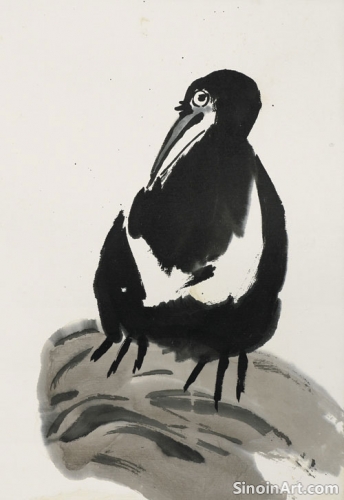Xieyi Painting and the Use of "Contrasting Ink"
|
The term “Contrasting Ink,” or nóngdànmò (濃淡墨), refers to the strategic use of both dark and light ink in Xieyi painting to create a sense of depth, volume, texture, and atmosphere within a composition. The skillful application of contrasting ink values is essential to the artistic expression of the Xieyi technique. It is a way to make the artwork both dynamic and expressive.  The skillful combination of rich, dark ink and delicate, light washes allows the artist to create a sense of visual contrast and to define the forms within their paintings. The light and dark areas balance each other to create a dynamic and expressive overall composition. The strategic use of light and dark is central to the art form.  The use of dark ink can create a sense of boldness, strength, and immediacy, while light ink can be used to create a feeling of distance, depth, and softness. This application of ink creates a powerful contrast in the painting. The contrast serves to emphasize different areas, and it also serves to add a visual dynamism to the composition.  The controlled blending of dark and light inks, often through the technique of layered washes, allows the artist to create subtle gradations of tone, adding depth and complexity to their paintings. This careful blending is what gives the work its layered and highly textured visual quality. It shows a great skill at blending both ink and washes. Mastering the use of contrasting ink is crucial to achieving the full range of expressive potential within Xieyi painting, providing a way to capture the subtle nuances of light, shadow, and form. It is essential for any artist who wishes to be able to apply the full range of expressive possibilities within the Xieyi technique. |
Tag : Contrasting ink, Nongdanmo, light and dark, ink wash, Xieyi tones
Related information
- The Use of "Broken Ink" in Xieyi
- The Use of "Reversed Brush" in Xieyi
- The Influence of Literati Painting on Xieyi
- Xieyi and the Concept of Spontaneity
- Key Techniques in Xieyi Brushwork
"Broken Ink" (pòmò) is a key technique in Xieyi painting, involving layering wet ink to create rich and varied tones, depth, atmosphere, and a sense of spontaneity, reflecting a controlled approach to the unpredictable nature of ink and water, adding visual texture and depth.
The "Reversed Brush" (nìfēng) in Xieyi involves starting a stroke by moving the brush in the opposite direction, then reversing to create strong, textured, dynamic lines, conveying a sense of force, resistance, and visual interest, while requiring precise control and a deep understanding of brush responsiveness.
Xieyi painting is deeply influenced by the tradition of literati painting, emphasizing personal expression, calligraphic brushwork, the blending of poetry and painting, and the pursuit of simplicity and naturalness.
Spontaneity is crucial in Xieyi painting, reflecting the emphasis on intuition, direct experience, and the expression of immediate feelings, allowing the artist to embrace imperfections and work in the moment, aligning with the principles of Chan Buddhism.
Key techniques in Xieyi painting include line drawing, splashing ink (Pomo), dry brush work, the control of ink washes, and the strategic use of negative space, each contributing to the expressive power of the artwork.